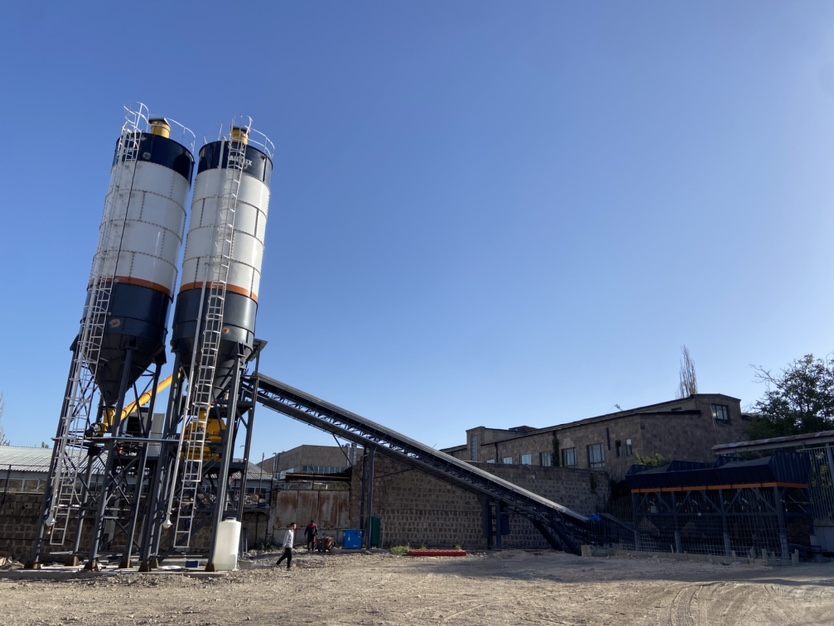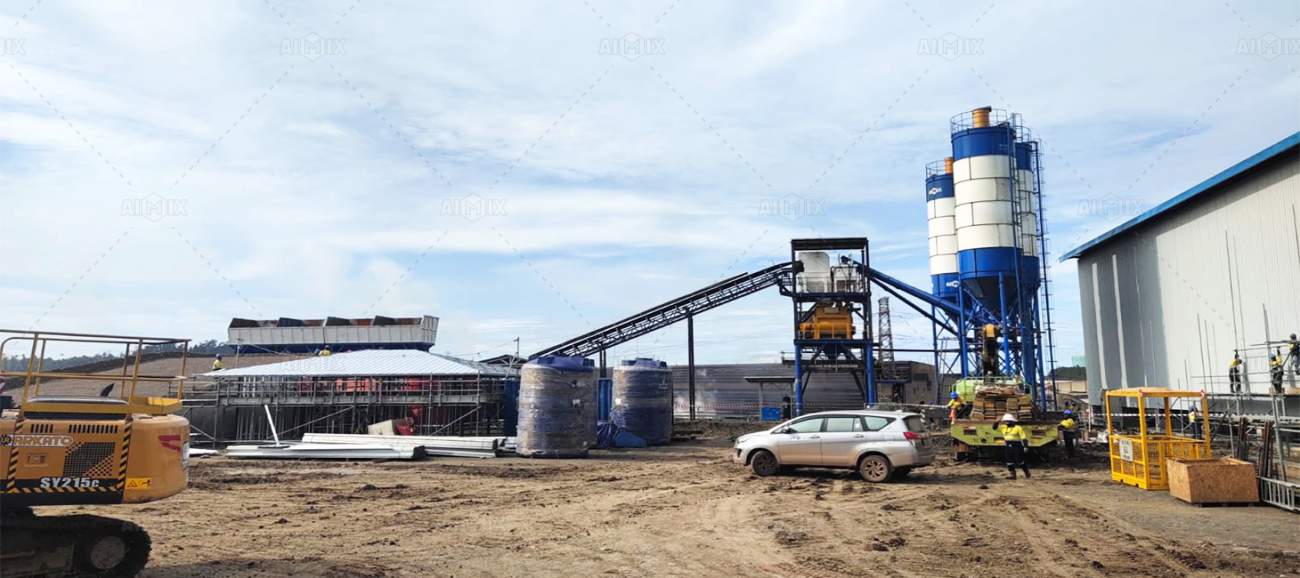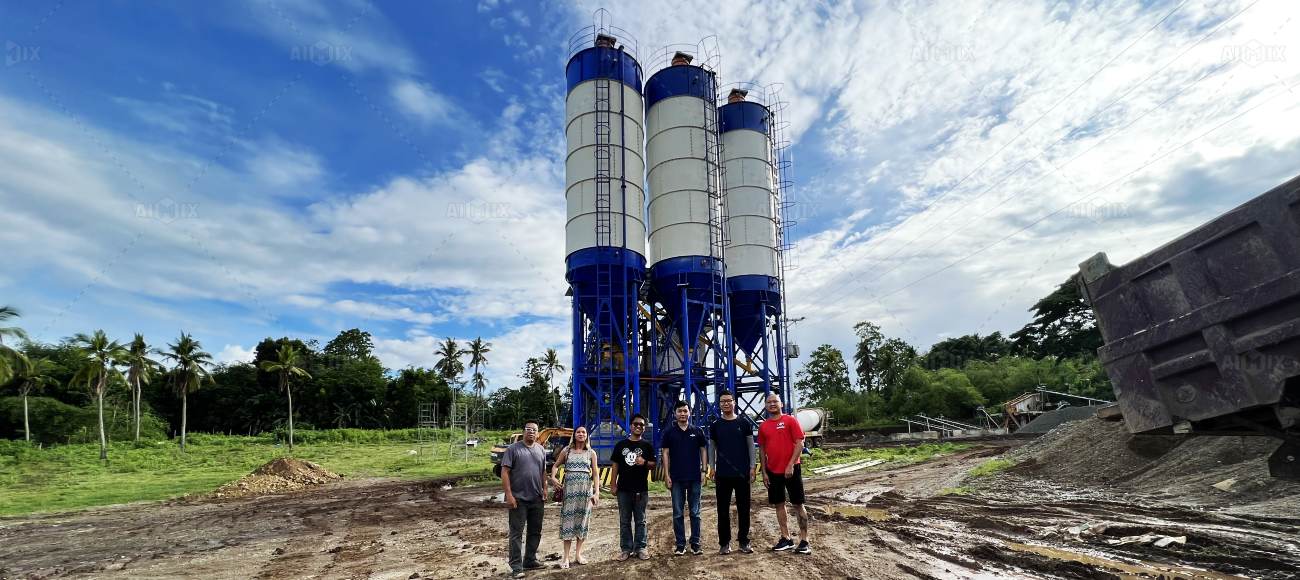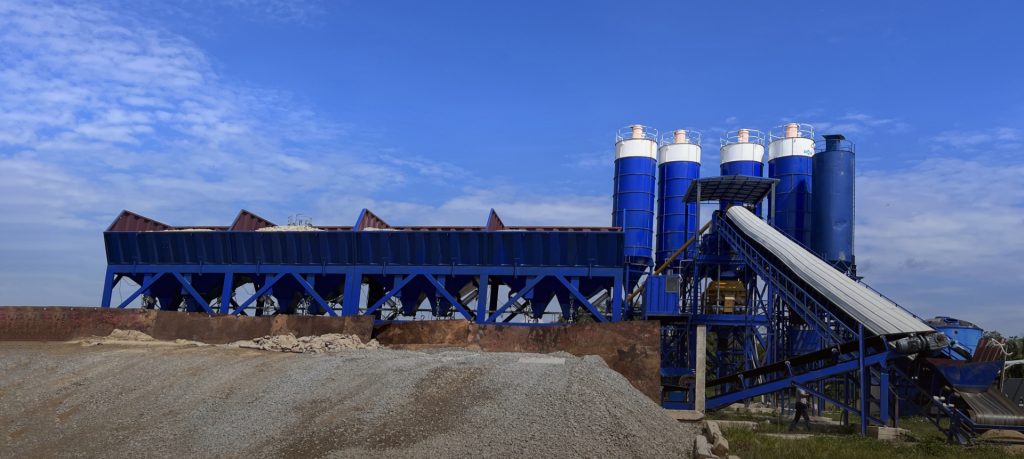In the face of rapid urbanization, green infrastructure, and shifting economic landscapes, the concrete batching plant cost has become a strategic focus for contractors, investors, and construction business owners. Whether you’re preparing a concrete batching plant business plan or looking to upgrade your existing operations, understanding cost trends is essential to long-term success.
In this article, we break down the key factors influencing concrete batching plant cost globally, explore how market trends are evolving, and provide insights into future price drivers across equipment, materials, and technology.

1. Global Demand Driving Up Equipment Costs
The global construction industry continues to grow—particularly in regions such as Southeast Asia, the Middle East, and Africa—driven by infrastructure investments, population growth, and industrialization. As a result, the demand for ready-mix concrete and efficient batching solutions has surged.
This increasing demand contributes directly to the rise in equipment prices. Suppliers of concrete batching plants are experiencing:
-
Longer lead times for steel, motors, and sensors
-
Higher costs for raw components like conveyors, silos, and mixers
-
Increased shipping and logistics costs
In many regions, this has led to an average 10–15% increase in concrete batching plant cost compared to pre-2022 levels.
2. Shift Toward Automation and Smart Technology
Another major trend reshaping cost structures is the adoption of automation and IoT-based monitoring systems in batching plant operations.
While these technologies raise the upfront investment, they contribute to:
-
Reduced labor requirements
-
Higher batching accuracy and consistency
-
Predictive maintenance (reducing downtime)
-
Long-term savings in fuel and energy
For example, integrating a smart PLC control system and IoT dashboard can add $5,000–$20,000 to the initial price—but it can reduce annual operating costs by up to 20%. If you’re drafting a concrete batching plant business plan, factoring in automation may enhance your ROI forecast and reduce risk over time.

3. Regional Variations in Concrete Batching Plant Cost
Concrete batching plant costs vary significantly across different parts of the world due to fluctuations in labor, material availability, and regulatory conditions.
● Asia-Pacific:
High demand, abundant local manufacturing, and competitive pricing make this region cost-effective for procurement. Average cost: $30,000–$150,000 depending on size and configuration.
● Middle East & Africa:
Higher import costs and logistical challenges often raise the total cost of ownership. However, long-term infrastructure projects create high demand for mobile and stationary batching plants. Average cost: $40,000–$200,000.
● Europe & North America:
Higher compliance costs, stricter environmental standards, and skilled labor premiums increase prices. However, energy efficiency and digital control systems are widely adopted. Average cost: $100,000–$300,000+.
If your concrete batching plant business plan targets an international market, regional pricing and regulation research is crucial.
4. Plant Type and Configuration: Key Cost Drivers
Your selection between stationary, mobile, or compact batching plants will also influence cost structure:
| Plant Type | Typical Use Case | Cost Range (USD) |
|---|---|---|
| Stationary Plant | High-volume commercial use | $100,000–$500,000+ |
| Mobile Plant | Infrastructure/remote construction | $40,000–$150,000 |
| Compact Plant | Small sites, urban areas | $25,000–$90,000 |
Each configuration can be customized based on:
-
Mixer type (twin-shaft, planetary, drum)
-
Output capacity (25–180 m³/h)
-
Storage silos and bins
-
Control systems
-
Environmental enclosures
It’s vital that your business plan for a concrete batching plant aligns your project requirements with a plant configuration that balances cost, mobility, and output.

5. Energy Efficiency and Green Compliance Costs
With sustainability taking center stage, governments and developers are demanding more eco-friendly equipment. As a result, batching plants with:
-
Dust collection systems
-
Noise suppression features
-
Energy-efficient motors
-
Recycled water usage
are gaining traction, but at a premium. These add-ons can increase the concrete batching plant cost by 10–25%, depending on compliance standards.
That said, many green initiatives offer grants or subsidies to offset these higher costs—so it’s wise to research funding options during your concrete batching plant business plan development.
6. Maintenance and Lifecycle Costs: Think Long Term
While initial purchase price is important, lifecycle costs can dramatically affect profitability. Consider:
-
Spare part availability
-
Servicing intervals
-
Downtime risk
-
Warranty and technical support
A lower-cost plant with poor durability can incur hidden costs over time. When evaluating a batching plant for sale, always factor in Total Cost of Ownership (TCO) instead of just the purchase price.
7. Future Outlook: What to Expect in 2025 and Beyond
As we move into 2025 and beyond, the following trends are likely to influence concrete batching plant cost:
-
Increased demand for modular and containerized designs to simplify logistics
-
Digital twin integration for virtual monitoring and predictive performance
-
Rising steel and energy prices globally
-
Localized production in Africa and Southeast Asia reducing dependency on imports
-
Rental models and used plant markets offering flexibility for startups
These trends should be reflected in any modern concrete batching plant business plan, especially when projecting investment horizons and expansion phases.
Conclusion
Concrete batching plant cost is influenced by a complex interplay of market trends, equipment configuration, regional pricing, and technology adoption. Whether you are planning to invest in a mobile unit for infrastructure projects or a high-capacity stationary system for urban concrete supply, understanding the evolving cost landscape is critical.
If you’re in the early stages of building your concrete batching plant business plan, consider future-proofing your investment by prioritizing energy efficiency, smart control systems, and supplier reliability. With construction demand showing no signs of slowing, a well-chosen batching plant can deliver strong ROI and operational resilience for years to come.
